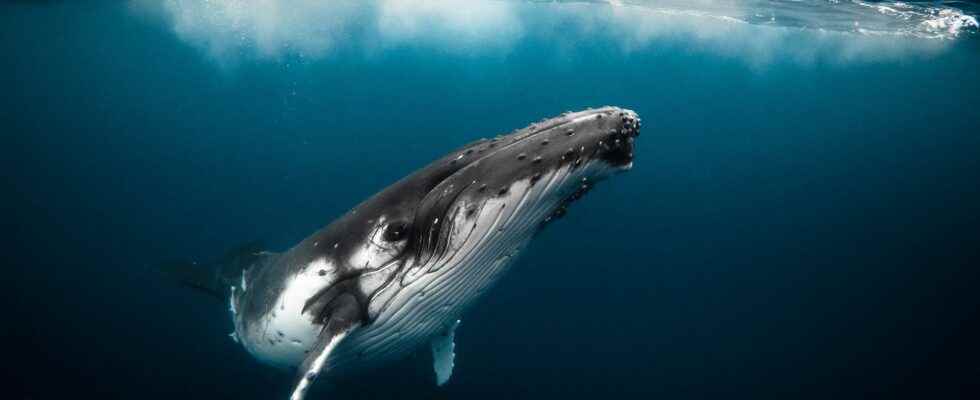Sperm whales can dive up to a thousand meters deep, gray whales migrate thousands of kilometers through the ocean – just two of the feats that large whales are capable of. The animals are driven by the powerful beat of their tail fins, which each time sends strong pressure waves through the whale’s body. At the same time, the mammals have to hold their breath underwater, which increases the pressure in their bodies. However, their blood vessels and brain do not suffer damage as might be expected in humans. In Science, Robert Shadwick of the University of British Columbia and his team describe why this doesn’t happen.
Whales have a special network of blood vessels in their skulls, the so-called rete mirabile: a network of extremely fine arteries that branches off from an artery and later reunites to form an artery. It was discovered as early as the 17th century and is also found in other mammals, for example in the kidneys. In the case of the great whales, however, the meaning was unknown for a long time.
Shadwick and co therefore developed a computer model that the working group could use to simulate the pressure fluctuations in the whale’s body and its consequences for the vascular system. The model is based on the physiology of eleven different species from bottlenose dolphins to large whales.
According to the model, the rete mirabile plays a crucial role in equalizing pressure: it keeps blood pressure in the brain constant without the whales having to slow down their tailbeats. The network of blood vessels carries the increase in pressure from the arteries that carry blood into the vessel through the network until the arteries merge into the veins that leave the brain. This distributes the pressure over a large area, which is why the rete mirabile acts like a protective helmet: it protects the whale brain from pressure fluctuations without changing the blood flow in the rest of the body. According to the simulation, the vascular network “swallows” about 90 percent of the increase in pressure triggered by the tail beats: enough to dive deep or swim vigorously without causing a stroke.
